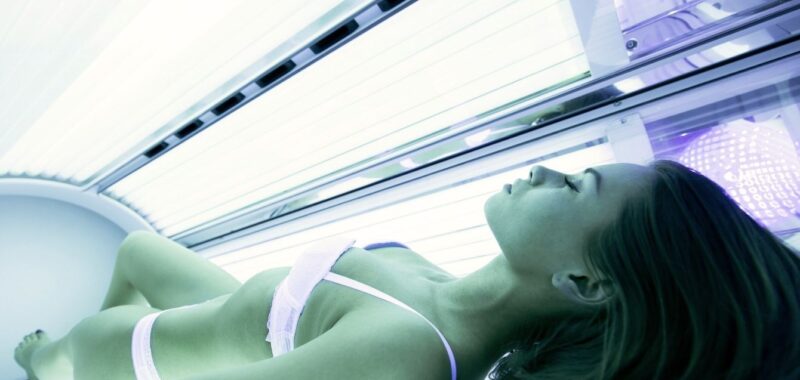In the early 2000s, tanning beds were everywhere. But as more and more science came out about their dangers, millennials led the charge to stop using them. In 2009, the International Agency for Research on Cancer classified all UV wavelengths—those produced by the sun and the ones you get exposed to in tanning beds—as group 1 carcinogens, which puts them in the same category as cancer-causing substances like asbestos, tobacco, and plutonium. Since then, several countries have banned tanning beds, and 44 states now restrict minors from using them. By the 2010s, tanning salons had declined 30 percent in the U.S.
But now, Gen Z is bringing them back for some reason. Yes, the generation that’s famous for TikTok videos featuring skincare regimens that are 15 products deep is embracing tanning beds, which are known to cause skin cancer. And even more alarmingly, it may be because of rampant misinformation about the risks.
The American Academy of Dermatology conducted a survey and found that Gen Z has less knowledge about UV safety than older generations—a third of Gen Z respondents got a D grade or lower, while more than half of older adults got a B or higher. Even worse, 28% of Gen Z respondents said that getting a tan was more important to them than protecting themselves against skin cancer.
Social media seems to be driving a lot of the misinformation. Jacqueline Watchmaker, MD, a dermatologist at U.S. Dermatology Partners, told Women’s Health magazine, “There is this wave of misinformation that affects younger teens and Gen Z. I definitely have seen some 20-year-olds who come in not only tan, but red-brown—they’re so tan, I call it mahogany.”
Twenty-eight percent of Gen Z survey respondents said getting a tan was more important to them than preventing skin cancer, with 70% reporting tanned or darker skin in 2023.
“Image is so important to this age group,” said Dr. Rogers. “This is a generation incredibly focused on beauty with a significant fear of aging. Tanned skin seems to have visual appeal, and projects the image of good times, however what people don’t realize is that tan skin is a sign your skin has been injured.”
She also said younger adults tend to brush her off when she tries to talk to them about sun protection.
Tanning beds are not an abstract danger. Today’s tanning beds may be even more dangerous than the ones that proliferated in the early 2000s—they now use stronger, more concentrated UV rays that allow users to get a tan in shorter sessions. Studies have shown that using a tanning bed even one time before the age of 35 increases the risk for melanoma by 75%, the risk for squamous cell carcinoma by 58%, and the risk for basal cell carcinoma by 24%. But skin cancer isn’t even the only risk — indoor tanning can also cause eye damage, weaken your immune system, and prematurely age your skin.

